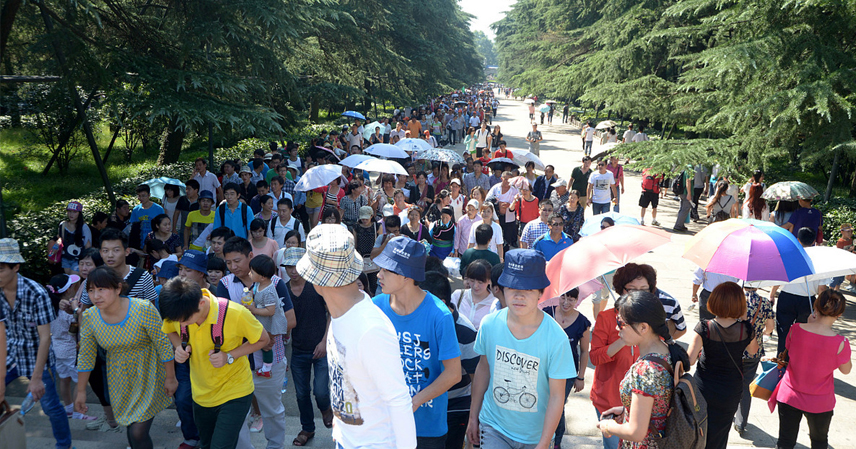China’s “Super Golden Week” Sees Diverging Regional Tourism Results
This year’s eight-day National Day and Mid-Autumn Festival holiday, dubbed a “Super Golden Week,” ignited fierce competition among Chinese provinces for tourism traffic. As of now, 29 provinces have released their tourism data, revealing Henan as the top province by visitor numbers and Jiangsu as the leader in total tourism revenue.
Henan: Highest Visitor Numbers Despite Rainfall Impact
Out of the 29 provinces, 25 disclosed exact visitor counts. Henan recorded 81.36 million visitors and 539.1 billion yuan in tourism revenue. Despite heavy rainfall across much of the province, visitor numbers reached 89.1% of last year’s level and revenue 83.4%, according to comparable data.
Interestingly, during the 2024 National Day holiday (seven days long), Henan welcomed 79.92 million visitors, generating 56.59 billion yuan, marking a 5.1% and 15.5% year-on-year increase respectively. While 2025 saw a slight decline due to weather, Henan still outperformed all other provinces in terms of total tourist volume.
Following Henan were Guangdong and Jiangsu, which received 65.18 million and 60.75 million visitors respectively—both within the “60 million tier.”
Other provinces surpassing 40 million visitors included Sichuan (47.34 million), Fujian (46.34 million), Shanxi (43.86 million), and Yunnan (41.51 million).
Jiangsu: The Top Performer in Tourism Spending
Although Henan led in total visitors, Jiangsu emerged as the biggest economic winner, achieving 64.493 billion yuan in total tourism revenue, the highest nationwide. Guangdong followed closely with 61.32 billion yuan, making both provinces the only ones to surpass 60 billion yuan during the holiday.
Data from the Jiangsu Smart Tourism Platform showed that from October 1 to 8, 2025, Jiangsu hosted 60.75 million domestic visitors, with total spending up 23.73% year-on-year, and daily averages rising over 8% compared to 2024.
In Guangdong, preliminary figures indicated an 11.5% rise in visitors and a 14.2% increase in revenue, reinforcing its position as a top tourism powerhouse.
Other provinces with total tourism revenue exceeding 500 billion yuan included Yunnan (568.68 billion yuan), Zhejiang (546.8 billion yuan), and Henan (539.1 billion yuan). Fujian, Sichuan, and Beijing ranked next, each surpassing 300 billion yuan, with respective totals of 388.4, 384.01, and 316.5 billion yuan.
Zhejiang Leads in Per Capita Spending
Beyond volume and total revenue, per capita spending has become a key metric for measuring market vitality and consumption structure. Zhejiang topped the nation with an average spending of 1,454.1 yuan per tourist, reflecting strong consumption conversion.
According to the Zhejiang Provincial Department of Culture and Tourism, the province received 37.6 million visitors, up 7.3% year-on-year, generating 54.68 billion yuan in total revenue—an 8.8% increase from 2024, and marking a record high since 2021.
Other provinces with per capita spending above 1,000 yuan included Hainan (1,425.6 yuan), Yunnan (1,370.1 yuan), Xinjiang (1,346.5 yuan), Beijing (1,261.3 yuan), and Jiangsu (1,061.6 yuan).
A Snapshot of China’s Domestic Tourism Revival
The 2025 “Super Golden Week” data highlights both the resilience and the regional disparities of China’s tourism market. While central provinces like Henan drew the largest crowds, coastal economies such as Jiangsu and Zhejiang demonstrated higher spending power and stronger consumption capacity.
Despite weather challenges and shifting travel trends, the overall figures signal that China’s domestic tourism continues its robust post-pandemic recovery, underpinned by regional diversity and evolving consumption habits.



